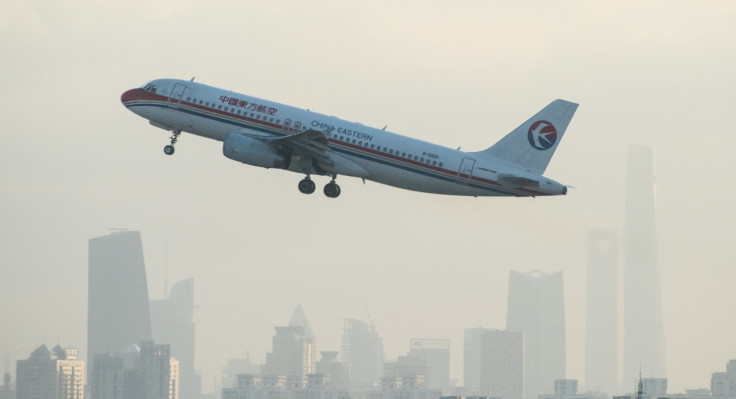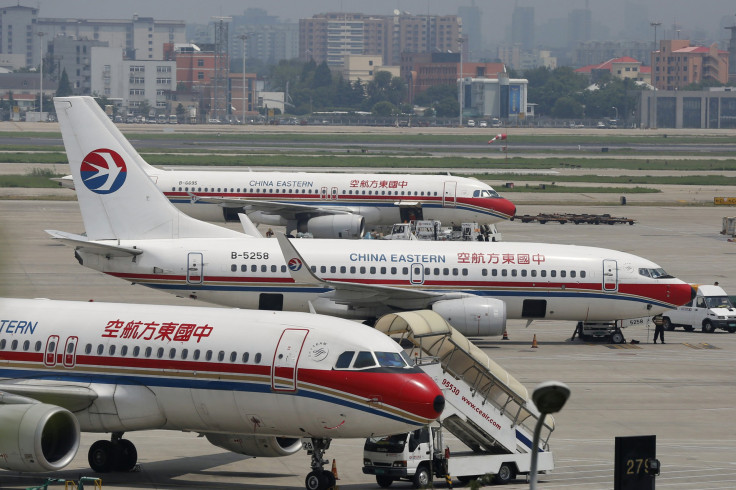Are Planes Safe In Turbulence? 26 Injured On China Eastern Airlines Flight

At least 26 passengers were injured Saturday after their plane encountered severe turbulence. China Eastern Airlines Flight MU774 from Paris was bound for the southwestern Chinese city of Kunming when it hit approximately 10 minutes of rough air.
During that time, passengers suffered broken bones, cuts and other injuries as some hit the overhead bins and others were struck by falling luggage, according to state news agency Xinhua. Four of those injured were in serious condition.
Read: Plane Disappears Over Bermuda Triangle, Leaving 2 Adults And 2 Toddlers Missing
“We felt strong turbulence twice and minor turbulence three times,” a passenger told Xinhua. “The process lasted about 10 minutes.”

“I was on the flight and I felt like I would not survive,” another passenger told the South China Morning Post. “Many people were injured and among them, many had not buckled up.”
In a blog post, China Eastern Airlines emphasized the importance of keeping seat belts on during flights to avoid incidents like the one on Flight MU774.
“[We] remind all passengers, for your safety, please fasten seatbelts,” the airline wrote.
The plane made it to its destination about an hour later than it was scheduled to on Sunday, according to Xinhua.
While turbulence can cause injuries like the ones suffered on the Kunming-bound flight Saturday, that’s generally as far as the damage goes.
“Even in extremely rough air, the wing is not going to break off and the plane is not going to flip upside down,” pilot Patrick Smith told Gizmodo.
Planes are constructed to withstand turbulence: most modern plane wings flex up to 90 degrees, while some models have sensors to predict rough air that otherwise would not be visible to the pilot.
“Substantial damage to air carrier aircraft is extremely rare, but there have been a couple of cases where turbulence was so severe that an engine was torn off its pylon,” Robert Sharman, a professor and project scientist at the National Center for Atmospheric Research, told Gizmodo. “Even in these cases, the aircraft was able to land safely.”
While turbulence doesn’t pose a major danger to the plane, some scientists think it will become more common in the coming years thanks to a changing climate— leading to less comfortable and possibly longer flights. Researchers at the University of Reading and the University of East Anglia in England found in 2013 that global warming could destabilize air currents at high altitudes, exponentially increasing turbulence on flights.
“Our results suggest that climate change will lead to bumpier transatlantic flights by the middle of this century,” the researchers said. “Journey times may lengthen and fuel consumption and emissions may increase.”
Read: Study Shows High Levels Of Depression And Mental Health Stigma Among Airline Pilots
And while pilots can sometimes avoid the turbulence that comes with bad weather, other invisible rough patches are near-impossible to avoid.
“Clear-air turbulence changes significantly within the transatlantic flight corridor when the concentration of carbon dioxide in the atmosphere is doubled,” the researchers said. “Clear-air turbulence is especially difficult to avoid because it cannot be seen by pilots or detected by satellites or onboard radar.”

© Copyright IBTimes 2024. All rights reserved.






















